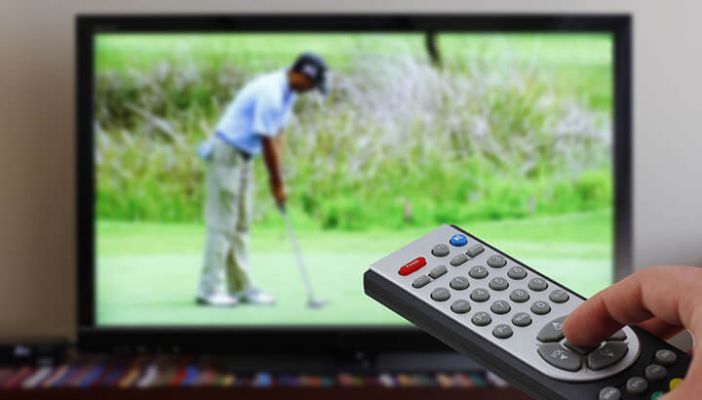It’s no secret that all golfers want to improve. Getting better is a way of life. Shaving strokes off our scores and handicaps is a consistent goal. We’re constantly thinking about how we can improve our swing and gain an edge.
But, what can golfers do when not on the course? What if you can’t get to the course or practice range as much as you’d like? No worries, opportunities to improve your game are everywhere — if you just look hard enough.
For those golfers who can’t stop improving, here are eight things you can do at your house to shave strokes on the course:
Watch golf
Perhaps the most obvious thing you can do at your house to shave strokes is to simply watch the game. The PGA Tour is broadcasted on the Golf Channel or national television every week from Thursday through Sunday. Take some time to watch how the game’s best players prepare for each shot and execute them. Take some of the insights you gain out onto the course and you’re bound to see your score improve.
Practice in the mirror
Have you ever seen yourself swing? After watching the PGA Tour and seeing some of the world’s best golf swings, attempt to emulate specific moves by practicing them in front of a full-length mirror. You don’t even need a golf club for this; simply mimic a golf swing and hold the finish. Practicing in front of a mirror will unveil all sorts of potential flaws in your setup, swing path and finish.
Putt
If you have a rug or carpet anywhere in your house, you’ve got all you need to practice your putting stroke in any weather condition. Drop a ball and a plastic cup on the ground, work on your stroke from several realistic distances. The added repetitions will do wonders for your confidence when you’re on the course facing a tough par putt.
Chip in the yard
Similarly to putting inside, if you have a yard — of any size — you’ve got enough room to practice your short game. Grab a set of plastic practice golf balls and work on your pitches from five, 10, 20 and 30 yards. The repetitions will ensure you can take on even the hardest chip shots when on the course.
Install a simulator
In the past, it was almost impossible for many golfers to install an at-home golf simulator. But, with the addition of several budget-friendly options to the market, golfers now have the opportunity to install a system in their house. Simulator systems such as OptiShot or P3 Pro Swing can be quite affordable (as low as $500) and require only enough room to swing a golf club.
Most simulation systems feature software to install on a computer and an artificial tee to hit irons and woods from. Low-cost simulators typically come with lightweight practice balls, while more expensive packages include nearly indestructible projection screens to visually simulate a round while you hit.
In addition to clear game-improvement objectives, golf simulators also offer a variety of fun and engaging games and simulated rounds, making it easy (and affordable) to keep your swing sharp indoors during the long offseason.
Exercise
One glance at a PGA Tour leaderboard and you’ll see several golfers who could be considered fit or athletic. Fitness is here to stay for the game’s best golfers and it should be a part of your game improvement too. This offseason, begin a dedicated golf fitness strength and conditioning program and you’ll see strokes shaved off your handicap just as fast as you see the pounds coming off.
Stats
At home, a productive activity for any golfer would undoubtedly be to comb through the stats. Whether you use pencil and paper or one of the industry’s new performance tracking systems, gather data while on the course so you can examine and gain insights from it. The knowledge you’ll gain from examining your past play will do wonders to your score over the long haul.
Prepare
Use your time at home wisely by studying the course, its holes and the best places to miss. Head into your next round by knowing exactly what club you’ll hit in any situation. Course management is crucial to strong play. Preparing ahead of time will ensure you’re prepared.
— Ben Larsen
